Jeff Haddock & Jeffrey Medieros - On-site Commercial Standing Seam Roofing Manufacturing - PODCAST TRANSCRIPT
March 4, 2024 at 12:00 p.m.Editor's note: The following is the transcript of a live interview with Jeff Haddock and Jeffrey Medeiros with AEP Span. You can read the interview below or listen to the podcast.
Intro: Welcome to Roofing Road Trips, the podcast that takes you on a thrilling journey across the world of roofing. From fascinating interviews with roofing experts to on-the-road adventures, we'll uncover the stories, innovations and challenges that shape the rooftops over our heads. So fasten your seat belts and join us as we embark on this exciting roofing road trip.
Heidi J Ellsworth: Hello and welcome to another Roofing Road Trips from Roofer's Coffee Shop. My name is Heidi Ellsworth and we've got a really interesting podcast today. We're going to talk about something that you probably don't talk about every single day, but when you need it, you need it. And that is long-length roll forming. Those panels that are huge for huge projects. And what do you need to do? We've asked the experts at AEP Span to come visit with us about this and what they have to help you out. So I'd like to introduce at Jeff Haddock and Jeff Medieros to the show. Welcome gentlemen.
Jeff Haddock: Hello.
Jeffrey Medieros: Thank you for having us.
Heidi J Ellsworth: It is so great to have both of you. What an interesting topic. But before we jump in, let's start with some introductions. So Jeff Haddock, can you go ahead and introduce yourself? Tell us a little bit about what you do at a AEP.
Jeff Haddock: Yeah, I'm Jeff Haddock, I'm the technical services manager with AEP Span. I've been with the company about 22 years and I oversee our weather tightness warranty program and deal with all things on a technical aspect from the install perspective. So I kind of have my run of my time here. I've produced it, sold it, done just about everything up until now where I'm actually working on the technical side of it.
Heidi J Ellsworth: Very cool. I love it. And Jeff Medieros?
Jeffrey Medieros: Hi, how are you? My name is Jeff Medieros. I'm with AEP Span's Architectural and Design Arm. I have a bachelor's in Law and Society from UC Santa Barbara. I attended University of Tokyo Waseda in Japanese. I'm a licensed contractor and then I attended McGeorge School of Law here in Sacramento. So, my role with AEP is to work with design professionals and bring projects, complex projects from the design, detailing engineering compliance code compliance side up to snuff and then put a full bid ready specification out. And then once that is done, I wash my hands of it and give it off to the sales team in a nice wrapped package with a bow and hope that we win said projects. So I can help contractors and architects with anything, any type of product, from metal to low slope to coatings to built ups to anything that you might need.
Heidi J Ellsworth: That's great.
Jeffrey Medieros: Roofing and waterproofing guy.
Heidi J Ellsworth: Wow, very cool. Great combination, you two, I love it. But for those few people out there who maybe are not that familiar with AEP, Jeff Haddock, can you tell us a little bit about the company?
Jeff Haddock: Yeah, absolutely. So we are a manufacturer of metal roofing wall systems. So we produce an array of different styles of profiles for roofing and wall panel applications in both standing seam and concealed fastening. Or excuse me, standing and concealed fastening as well as exposed fastener, traditional style sliding bar panel type stuff there. We've been around for about 53 years. Started back in 1971, a company called ASP Pacific. And we're actually been bought and sold as a large company. We've been bought and sold quite a few times and won't worry with all the details of all our previous ownership. But we are currently owned by a very large steel producer out of Melbourne Australia, known as Blue Scope Steel. And we operate under the AEP Span umbrella. Which again, and we primarily service the commercial industrial architectural world. We do handle some high end residential, but we're mainly in the commercial aspect of roofing and siding. A lot of military municipality, government project and things of that nature.
Heidi J Ellsworth: Really and such an interesting... I love it, because being commercial is what we talked about. You need different profiles and sometimes you need very, very large spans in order to get a project done. And so you all have come up with some great solutions. And Jeff Medieros, I'd love for you to talk a little bit about what you've been doing with your on-site roll forming option.
Jeffrey Medieros: All right, just so we're all on the same page, I'm not sure what everyone's background is. A roll former is a collection of rollers on a machine that takes a metal coil slit to a specific width, and as it rolls through, the rollers step by step form whatever metal panel or product you're going to install down the line. Roll formers make these panels to length, so we can do any length from one foot as long as you want to take it out. And most roll formers in the commercial large production company type are very large because they're heavy and they have to do a lot of continuous roll forming. So these are typically in a manufacturing facility.
We have that in a manufacturing facility, but we also have the exact same version mounted to a truck so we can go out onto a site and we can manufacture and roll form factory panels on site to a specific length. So, our offering is our factory quality, our factory type role former, the big boy that everyone wants to use that can roll continuously 10 years and we take it out to site and we can manufacture those panels for you directly on the construction site. So that's what our offering is. And it comes with all of our testing and our certifications and all that.
Heidi J Ellsworth: And these are panels above 45 feet, right?
Jeffrey Medieros: Yes. So we can roll any length panel. Just because we roll a 45 to a 100-foot-long panel on a job doesn't mean there's going to be a couple small ones that are one to two foot, or 10-foot panels over an entryway or something. So we can roll any panel length you need on site, but generally speaking, an onsite roll former is utilized because of its ability to roll long length panels that are not truckable. Or if there's site restrictions in site access to roll those long length panels on site so you can do a continuous length panel instead of lapping.
Heidi J Ellsworth: Yeah. Wow. So when you think about this, Jeff Haddock, as we're going through the benefits of having that long length roll former on site, there's also some limitations. So talk about the overall benefits and limitations. For the contractors out there who are thinking right now. "Oh, I bet I could use that," give them that full story.
Jeff Haddock: Well one good thing about the benefit of onsite roll forming, and this is something I always take back out to field with me. Sautered metal panels don't typically leak. Everything else that does. You've got your flashing penetration, things like that, especially when you're dealing with a long length roof round where you may have an end lap that's needed in there, that's a cut flush joint that's in the panel that doesn't necessarily need to be there and is the potential for future maintenance issues and she'll leak down the road, a couple years down the road, but it's still definitely potential for these types of issues. Whereas a solid metal panel, you're not going to get that issue. It's going to come down to the flashing and other accessories or how those are installed where the potential issues may arise. Having that concealed fasteners, it's just much more beneficial as far as longevity, long-term use to the owner benefits to that, such as that goes.
Heidi J Ellsworth: So, when we're looking at that, I mean looking through it and we're really looking at the type of profile, Jeff Medieros, what kind of profile does work really well with that long panel format?
Jeffrey Medieros: So, what you're after there is a standing seam or concealed fastener type panel. These are not through fastened panels whatsoever. Through fastened panels by definition are through fastened and so there's holes in them, A concealed fastener panel, a standing seam panel, does not have through fasteners through them, the actual fasteners through the clip inside the standing seam leg. So the profiles are all going to be standing seam, whether it's from us or someone else. But we use a two inch tall standing seam mechanically seamed panel leg, which means the male and female panels legs, after they interlock, have to be mechanically seamed with a mechanical seamer to fold it into each other and run it down.
So these panels are good down to a quarter-twelve slope. And for all your roofers out there that aren't familiar with metal under code, you are allowed to go down to a quarter-twelve slope with steel in a mechanically seamed type application. This is great for low slopes and on large buildings where you have long panel runs, it's imperative that you have these long length panels sealed along the seam the entire way. So our profile specifically is a mechanically seemed concealed fastener standing seam roofing panel.
Heidi J Ellsworth: So Jeff Haddock, can you expand on that, what we were just talking about on the mechanical seeming? That to me is really interesting. I know a lot of roofing contractors do that, but kind of talk about why that works, the benefits and how, the machinery and what's all involved.
Jeff Haddock: Absolutely. So [inaudible 00:10:23] thing about this, basically what most standing seam panels are lethal, typical types of panels are what they would refer to as a snap lock system, where it's just a male and female leg that would pop together. This particular panel profile actually requires the panel standing seam of it to be folded into itself to lock itself into a position. This is done by a mechanical seamer that runs on every rip and actually literally has a series of rollers that fold and roll the panel seam over to itself. And there's a couple benefits for this.
Very high wind uplift resistance. This particular panel that we can install or that we do on-site roll form, our Span Lock HP, is rated for hurricane zones, very high wind load. Very low slope because it's a two inch tall seam, allows us to get the quarter and 12 roof pitches out of that, which is basically that's flat. Both quarter and 12 fits, you can't even see the roof from the ground, it's invisible. Another benefit to that is we do on-site roll former does have for the same [inaudible 00:11:28] that we do in our factory panel, which also helps for air and water infiltration the seam furthering that leak protection and preventing any intrusion into the roof assembly. Very, very beneficial.
Heidi J Ellsworth: And you touched on hurricane wind uplift. So Jeff Haddock, what is included when you're talking about the Span Lock accreditation and testing?
Jeff Haddock: Yeah, so we've run the panel through a multitude of tests. I can bore you to death with ASTM numbers, but one of the big ones is the ASTM E1592, which is a structural wind uplift test where we've actually tested this panel at upwards basically five foot open span to mode of failure. I'm not going to pull in the documents of what that pounds per square foot load is. I can tell you in some variants we have reached upwards of 220 pounds per square foot of wind uplift resistance, which is quite high. But that's some of the testing that we do. We also have other testing that we've done within the seam, especially now for the fact that we actually have sealant in there, the ASTM air and water infiltration testing and then a really big tough one to get, which is on that panel you have ME2140, which is a static pressure head test.
Then not getting into big details on that, that test is basically where you build a test chamber around a seamed panel and stand six inches of standing water over that pane and it must hold for a period of six hours without any leakage or penetration through the seam. So very, very rigid test.
One last big structural performance test that we have is FM global certified. So this is an FM rated panel, that's a big one. And one thing very difficult to have that FM certification on a roll former that's typically stacked onto a trailer. But being as this is almost the exact copy of our rule former that we operate with inside the mill on our factory, we are able to offer all of the same testing and benefits that factory roll form panels get except with the system we can go for [inaudible 00:13:46].
Heidi J Ellsworth: Wow, Jeff-
Jeffrey Medieros: I do want to point thing out real quick. When Jeff Haddock was going through all those ASTM, we also do have UL certification as well, but there's a difference in the UL versus ASTM and I want to touch on that real quick. So UL is a pass-fail. Okay? UL is did you make it or did you, did you pass your realtor's exam or did you not pass your realtor's exam? Okay. ASTM is a push to failure test. Okay? That means to put it in perspective, if you're going to have surgery done, do you want someone that passed or failed or do you want someone that was ranked? And what ASTM does is rank that. I want the best surgeon working on me, right? I want the number one surgeon and that's what the ASTM testing does is push to failure. So this testing that Jeff has touched on isn't your standard run-of-the-mill testing that some roll formers have that people that throw up siding and gutters. Our on-site roll former complies with all of our ASTM push to failure testing, which is also included in our universal evaluation services report, like a UES, ICC, IATMO, which you're going to need for a majority of your submittals to push everything through. So this roll former meets all of those criteria.
Heidi J Ellsworth: Wow. Wow, that is impressive. Thumbs up. That's very, very impressive. And Jeff Medieros to kind of continue that, so with all of this, I mean great testing, great accreditation, on everything that we've talked about, but what should contractors consider when installing long-length panels?
Jeffrey Medieros: All right, so I'm going to paint a horrible picture and then I'm going to paint a great picture for you. Okay, are you ready? Everybody buckle up. You contractor are bidding on a 100 foot roll forming job where they will not allow laps, it has to be perfect length. There's a lot of things you have to take into consideration here. Okay, number one, there's going to be an additional cost moving the roll former to site. However minimal it might be, you still have to get that roll form that trailer to site. Number two, the coil has to be shipped into site. Number three, you have to have a long enough space and area to run out the panel to its full length. So if you're doing 100 foot long panels, you better darn well she make sure you have 110 to 120 foot of area to push that out.
Now once they're off the roll former, you're going to need one person per 10 foot length of the panel to lift and move that panel. You're then going to need an area to stage it. Okay, here's where the negative part comes in. If you need to lift these panels onto a high roof, you will need a crane rental. That's expensive. I was talking about heart surgeons earlier, crane operators make about as much as a heart surgeon if you've ever hired one. Okay? With those crane operators, you're going to need site control and site access, safety. There's another expense. The spreader bar might be needed. The spreader bar goes from two pick points to four pick points to two, four, six, eight pick points depending on the panel length. So it picks the panel up and it won't bow and sag in the middle. So the spreader bar might be a cost.
Once you've picked this panel up, you better hope you have perfect weather because if this panel spins and hits anything, you aren't out a 10 or a 20 foot long length panel that's damaged, you're out 100 foot long panel that's damaged. So all of these things, when you're bidding this job, you need to take into consideration because on-site roll forming has additional costs associated with it. Once it's on the roof, installation can continue on as normal, but the benefits to this thing are you don't have to lap it and you can run it full length. And a lot of architects now are specifying long length panels that are required.
And just because I painted that bad picture, here's the good side of this. Every other contractor out there better make darn well sure that they're bidding the exact numbers for all these things I just lined out because if they're not, you're going to be up a creek without a paddle and you do not want to be that person. So your A team has to be on site and you need to take into consideration all of those variables when you're doing a job like this.
Heidi J Ellsworth: Wow. I mean that is a lot to consider. And so you probably have contractors who specialize in this, right Jeff Medieros?
Jeffrey Medieros: Yes, we do. Jeff Haddock can speak more to this one because he works in the field with them on-site inspections where I work with design professionals.
Jeff Haddock: Yeah.
Heidi J Ellsworth: Perfect. So what kind of projects, what kind of contractors, what's the ideal application Jeff Haddock?
Jeff Haddock: Yeah, we're looking for really, I mean, is you don't want somebody that's kind of a cop shingle guy coming out here and doing anything. These are big commercial type projects where you're dealing with where you want license. Roofing license, sheet metal contractors that do have experience and understand manufacturer standard install details. That's the big thing. We want to work with the crops and dollars that have the knowledge base to know how to install these roofs and what the expectations are on that, for thermal movement and things. There's rabbit holes we can go down, are lot there. But a lot of these types of applications that you're dealing with, long length panels, gymnasiums or aircraft hangars, think large buildings, things like that. Most buildings, run of the mill, you can get 45, 48 foot panels out of the factory. But these are for large type applications where you need to get that nice long continuous length roof on there.
Heidi J Ellsworth: And do you see, Jeff Haddock, the contractors who are doing this pretty much specialize in this or it's something that they really do a regular? It's not just for anybody to start doing it without some practice.
Jeff Haddock: You want some experience in installing standing seam roof systems, some work experiences, because I wouldn't want to put all that roll forming for somebody that's been used to doing comp shingles for their-
Heidi J Ellsworth: Right.
Jeff Haddock: ... operating career. So definitely want to work with specialized contractor. And for those that are out there listening that may not be in contracting business, contacting a manufacturer for a list of approved installers, always a good idea. Let get that list out to you. Multiple selection.
Jeffrey Medieros: To go off of what Jeff was saying, from my side, from the design side, anytime that I am working with an architect on a project like this, I'll always have them make sure that in the specification that there's some considerations taken that must have done like projects, must be the certified installer of the manufacturer. This is not something that you want to just dabble in. It's definitely higher up on the difficulty scale. And especially when you take into consideration that one mistake can damage a long expensive panel. So you want to make sure that the A-team is on this 100%.
Heidi J Ellsworth: Wow. And Jeff Medieros, you had said earlier, you need to make sure you have 120 feet space to work that you really kind of know what you have to do. And you also talked about the cranes and the cost of a crane driver. So can you kind just overall put that together again with what site considerations are needed for long length overall, where the contractors are like, okay, this is what we have to do, consideration wise, for a project like this?
Jeffrey Medieros: Yeah, the first thing is you want to take into consideration site access. If you can get a roll former in there and be able to park it and make it level and have an area that is long enough to roll out a full-length panel, whatever size you need, plus a little bit of fudge room. Because when you roll that panel out, you're going to have to pick it up and have your installers transport it to a staging area. So spinning a panel like that takes some extra room. The second consideration is your eave height. Do you need a crane on site to lift these panels? That is an additional cost that you have to be able to build into a project like this.
Another site condition, I would say is going to be weather. I've done work with architects that do projects like this in the Pacific Northwest where it's always never windy and never rainy in Seattle, right? It's more difficult in higher weather considerations. So take into consideration. I mean, Texas. Winds kick up, right? Louisiana, winds kick up. So make sure that you take into consideration weather conditions and you schedule this for a pristine day.
Outside of that, you want to play with a manufacturer that knows what they're doing. And I say this because not all roll formers are created equal. There are a lot of roll formers out there that you can pick up for peanuts and get on site, but the testing doesn't go along with it. ASTM testing doesn't adhered to it, the UL testing doesn't adhere to it. You have to make that you're playing with a big manufacturer that knows what they're doing in order to play ball, especially with a lot of governmental projects where department of state architects back check is required.
Heidi J Ellsworth: Wow. So Jeff Haddock, can you step us through an average day involved with AEP Span on-site roll forming? We've kind of talked about it with considerations, but as a contractor, you're out in the field with the contractors all the time. What's that average day look like?
Jeff Haddock: The biggest thing there, make sure that we've got coordination with the contractor, making sure we're going to have access on the job site. Our roof is not the only trait taking place typically, so we've got to make sure not only going back to the side of her carrier that Jeff Medieros was touching on, but we also got to make sure we've got other traits that are staying there. One big thing is making sure they have a crew that's large enough. With our on-site roll former, we're sending out two people. So we have a tailor and then we have a machine operator that's out there that's generally running it, and the two-person teams.
But to what Medieros pointed out there, you need about a person per 10 feet of run. 100 foot panel, and we have the ability to roll up to 150 feet, you could be looking at 10 to 15 people that are needed there to support the panel so that when it's coming off of the mill, it's not kinking or crimping and that. But generally speaking, we can spit out quite a few feet, quite a few lineal feet per man hour out of that mill, that were very efficient at it. And it's just a matter of making sure that the contractor's got enough resources out there in the offloading of the panel, they roll us.
Heidi J Ellsworth: Yeah, we didn't talk earlier about labor, but I mean obviously labor and skilled labor who really understand how to work with these long panels.
Jeff Haddock: Absolutely.
Heidi J Ellsworth: Yeah. Okay, let's go to how to find out more. And I want to talk more than just, oh, go to the website and stuff, because that's kind of normal and we'll definitely get to that. But for contractors out there who are already doing metal roofing and they understand it, but they want to get into more commercial metal roofing and also long panels. Jeff Haddock, how do contractors make that move from more of your traditional metal roofing to this really kind of more specialized long panel commercial roofing metal panel roofing?
Jeff Haddock: Well of that issue, obviously want to get in touch with the sales department from our company. They're going to be the very first resource on that. And again, we don't want to refer everybody to the website, but there is a handy list of sales reps that's for these particular geographical areas on the Western United States that they cover. Working with them, and we can get you in set up with an account.
And then we do have most of these types of jobs for on-site roll forming, especially for government type projects, do necessitate what's called a manufacturer's weather tightness warranty whereas we have to certify the install. Well, in order for us to do that, the installer has to be certified. So we actually can, myself and another gentleman, we can help out. We can actually work with going through a class to certify four weather site warranty style projects of which on-site roll forming is included there, where we're revealing detailed installation requirements, engineering packages and we're just going over all of the required information.
And then on top of that, once the class has been conducted and certifications are done, myself or my counterpart, depending upon where the project is located, we actually are on site certifying the install and inspecting it during it. So generally speaking, we're not camped out on a job site, but we're doing a start-up and progress and usually a final inspection of the install workmanship of the roof, making sure that the owner of the property is going to get a sound working product at the end.
Heidi J Ellsworth: That's good. And Jeff Medieros, I want to kind of follow up on that because one of the things that seems to me also is for a contractor to start doing this, to be involved with it or even contractors who already have, having good relationships with the architects, with the consultants, with the building owners, so you really understand the project. And most of this is government work, so I would say probably facility managers, however that works, and this is your area, right? This is what you talk to that design community all the time. How can contractors kind of tap into that and be aware and working with them to make sure that everything goes as it should?
Jeffrey Medieros: So there's a couple things to this. The first one's going to be you're going to have to source the bid, which I'm sure that in your local areas, you're all members of whatever bid exchange is in your local area. But all governmental and public bid is going to hit that. So, once you source that and you find out what the basis of design is, work with the manufacturer of the basis of design and you're going to start seeing these where it is going to be pretty much the same players. So you're going to want to get in with those same players that are coming out for the larger, more nuanced projects. That's the first one.
From the other end is when you're going to become manufacturer certified, a lot of times sales reps will invite you to bid jobs when they know that you're capable of being able to do a job like this. Because when this is this high visibility with panels that are this long, the sales reps don't want it to go bad. So once you do one or two of these jobs, you're going to get invited to work instead of just sourcing it. So that's two ways that I would say to go about it.
Heidi J Ellsworth: Yeah, that makes total sense. Gentlemen, so interesting. Thank you. I mean, this is really one of those areas that you don't hear a whole lot about, but you sure do see them. How many times that I've seen those beautiful metal roofs on those buildings? So thank you so much. And I will say we want to come back to the website. So Jeff Haddock, what's the website and where should people go to get more information and find those sales reps?
Jeff Haddock: You can reach that to www.aepm.com, and there's actually a replica that you can get into and I see how [inaudible 00:30:48]. There's also a technical contact information where both of us actually, our information's in there as well. If you ever have any technical inquiries or questions as far as this all and the end use of metal roofing or siding, we're there for you.
Heidi J Ellsworth: That's excellent. Jeff Medieros, any last words?
Jeffrey Medieros: The only thing I didn't touch on was we don't stay on site for the duration of your project. We spit these things out. So something else to take into consideration is we're not going to roll one panel and watch you put it up and roll another one, and we're not going to be there for three weeks on a site. We are in, rolled and out. So the faster and the more people you have, the quicker it gets done and the better off it's going to be. So that's just one thing I didn't touch on, but I am looking forward to seeing if anyone reaches out because I love working with new folks. And feel free to contact me as well on the website under the architectural end of the spectrum.
Heidi J Ellsworth: That's excellent. Well, I have to say it. Jeff's thank you. I've been thinking it-
Jeffrey Medieros: You're welcome.
Heidi J Ellsworth: ... but I had to say it. Thank you so much. And everyone, please be sure to check out the directories for ASC building products and AEP Span all on Roofer's Coffee Shop. You can find out great information as you heard earlier about these blue scope companies for your metal needs and for your metal roofing. Great information. Also, please check out all of our podcasts under the RLW navigation, under Roofing Road Trips or on your favorite podcast channel. Be sure to subscribe and set those notifications so you don't miss a single episode. We'll be seeing all of you next time on Roofing Road Trips.
Outro: If you've enjoyed the ride, don't forget to hit that subscribe button and join us on every roofing adventure. Make sure to visit rooferscoffeeshop.com to learn more. Thanks for tuning in and we'll catch you on the next Roofing Road Trip.
Recommended For You
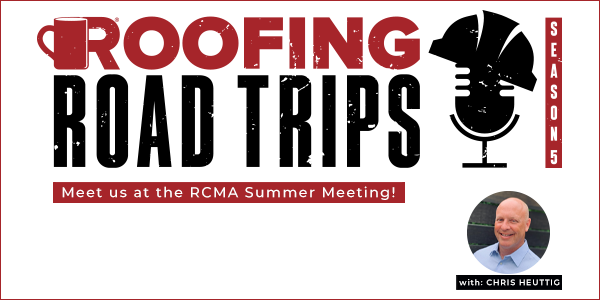
Chris Heuttig - Meet us at the RCMA Summer Meeting! - PODCAST TRANSCRIPTION
Read More ...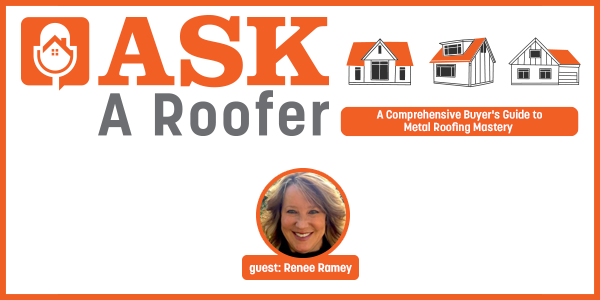
A Comprehensive Buyer's Guide to Metal Roofing Mastery - PODCAST TRANSCRIPTION
Read More ...
Visualize Your Future - PODCAST TRANSCRIPT
Read More ...












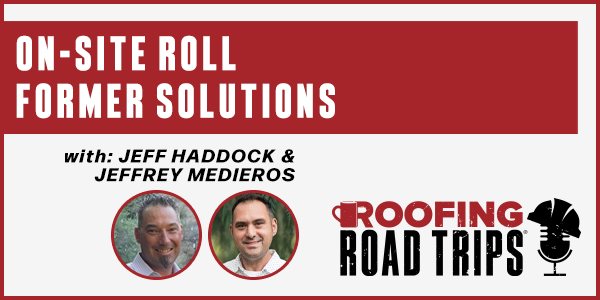

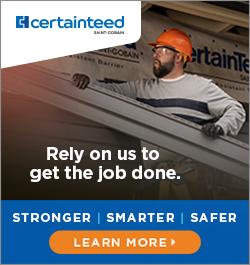
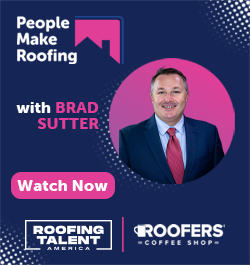

Comments
Leave a Reply
Have an account? Login to leave a comment!
Sign In